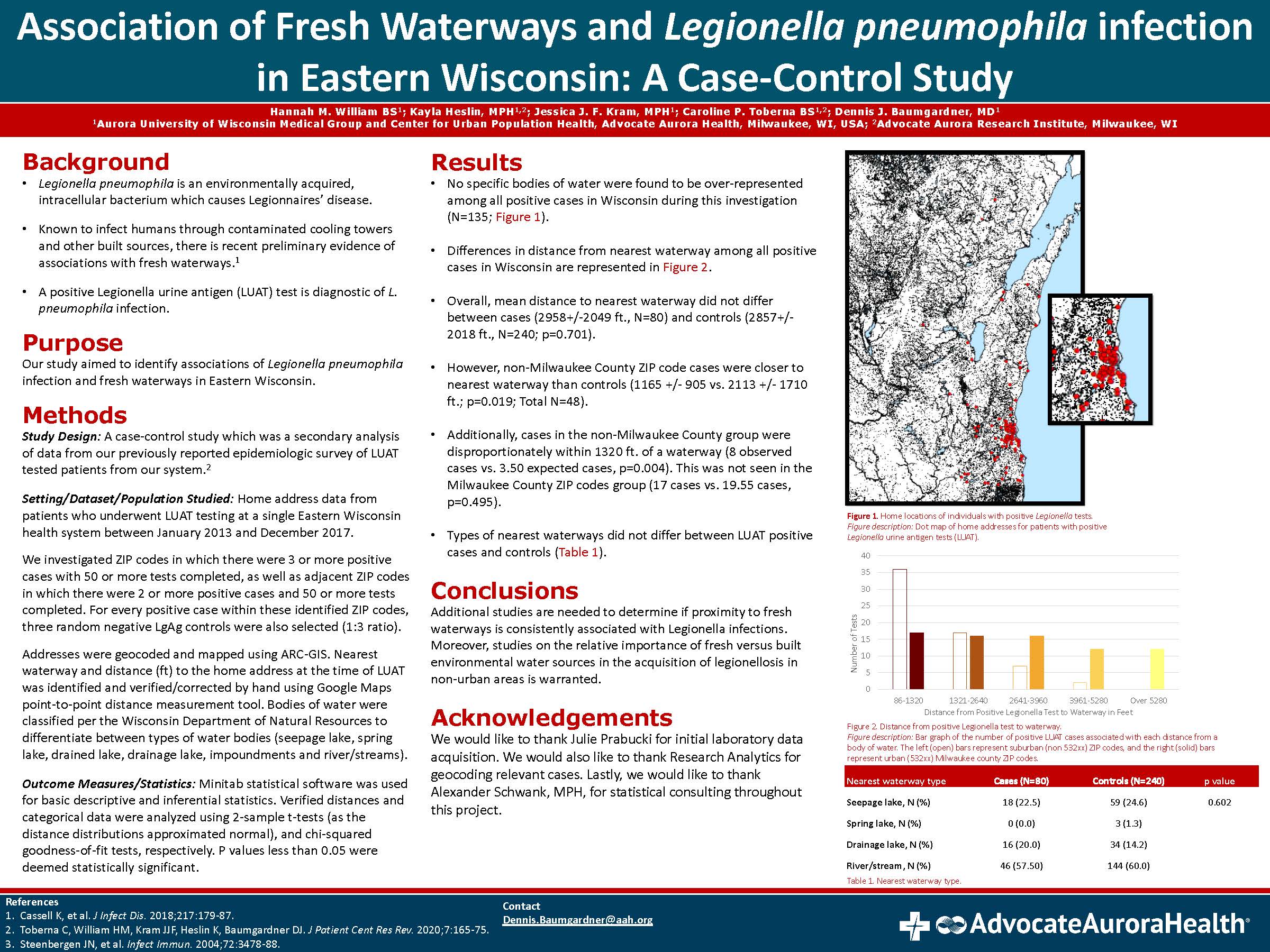PCR010: Association of Fresh Waterways and Legionella pneumophila Infection in Eastern Wisconsin: A Case-Control Study
Hannah William, BS; Kayla Heslin, MPH; Jessica Kram, MPH; Caroline Toberna, BS; Dennis Baumgardner, MD
Abstract
Context: Legionella pneumophila, an environmentally acquired, intracellular bacterium, causes Legionnaires’ disease. Known to infect humans through contaminated cooling towers and other built sources, there is preliminary evidence of associations with fresh waterways. A positive Legionella urine antigen test (LUAT) is diagnostic of L. pneumophila infection. Objective: Identify further associations of Legionella infection and fresh waterways. Study Design: Case-control secondary analysis. Setting/Dataset/ Population Studied: Home address data from patients with LUAT at a single Eastern Wisconsin health system 2013 - 2017. We investigated ZIP codes in which there were 3 or more positive cases with 50 or more tests completed, as well as adjacent ZIP codes in which there were 2 or more positive cases and 50 or more tests completed. For every positive case within these identified ZIP codes, three random negative LUAT controls were also selected (1:3 ratio). Addresses were geocoded and mapped using ARC-GIS; nearest waterway and distance to home (ft.) was identified, then verified/corrected by use of Google Maps incognito. Waterway type was classified per Wisconsin DNR. Outcome Measures: Distance to nearest waterway was analyzed using Chi-squared and 2-sample t-tests. Results: Overall, 80 cases and 240 controls from 22 ZIP codes were included. Mean distance to nearest waterway did not differ between cases and controls (2958 +/- 2049 ft. vs. 2856 +/- 2018 ft.; p=0.701). Additionally, cases were no more likely than controls to be within 1320 ft. (1/4 mile) of waterway (31% v. 28%, p=0.571). When only the subset of four non-532xx (non-Milwaukee) ZIP codes were analyzed (total N=48 addresses), cases were significantly closer to nearest waterway than controls (1165 +/- 905 vs. 2113 +/- 1710 ft.; p=0.019). In addition, comparing the number of observed vs. expected cases, the non-532xx ZIP code group cases were disproportionately within 1320 ft. of waterway (8 v. 3.45, p=0.004). There were no associations identified with type of waterway. Conclusions: Additional studies are needed to determine if proximity to fresh waterways is consistently associated with Legionella infections in non-urban areas. Moreover, studies on the relative importance of fresh versus built environmental water sources in the acquisition of legionellosis is warranted.

Jack Westfall
jwestfall@aafp.org 11/19/2021Terrific poster and presentation. very interesting topic and clinical connection. cool. Thanks for your work.